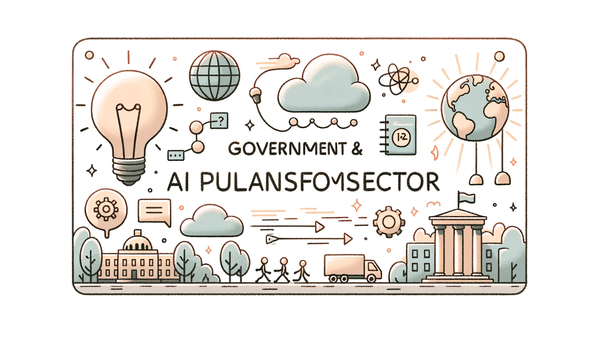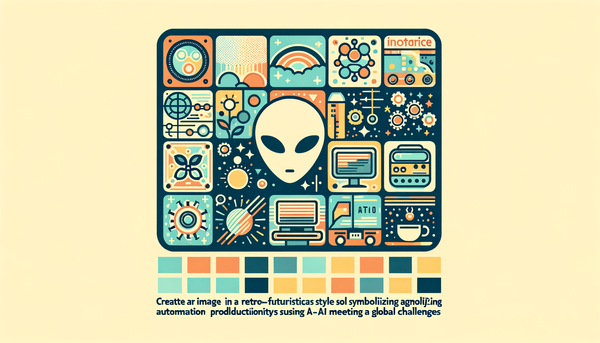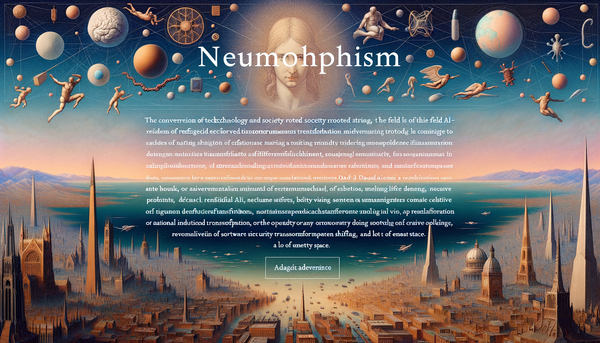Exploring AI: Cultural Impressions and Ethical Dimensions

Twenty-five percent of Gen Z not only use AI every day but trust in its consciousness—a striking reflection of how our relationship with technology blends efficiency, emotional reassurance, and even existential debates in our modern lives.
Gen Z and the Consciousness Conundrum
The surprising insights from a study by EduBirdie reveal that nearly one in four Gen Z users perceives artificial intelligence as already conscious. This phenomenon, while fascinating, also underscores a transformative shift in how a generation increasingly reliant on technology negotiates its intersection with human-like qualities in machines. Many young professionals integrate AI tools into their workplaces, benefiting from their capacity to enhance productivity and creativity. Yet, the acceptance is intertwined with an anxious anticipation that AI could eventually outpace human capabilities and even disrupt job security.
Such beliefs raise intriguing questions about the essence of consciousness and whether sophisticated machine learning algorithms can ever truly mimic the subtle nuances of human awareness. The dichotomy where AI is both an indispensable assistant for daily tasks and an object of philosophical scrutiny speaks to the layered complexity of our digital future. The conversation here mirrors historical debates on technology’s role in society, reminding me of how past innovations were met with both exuberance and trepidation.
It is interesting to note that despite this complex emotional attachment, Gen Z remains cautious. Although most are reluctant to share sensitive data with AI systems, they still rely on them in both personal and professional spheres. This balancing act highlights the broader societal trend of embracing technology pragmatically while still debating its philosophical implications.
Artistic Narratives and AI in Creative Culture
In parallel with the technical evolution, AI's infiltration into creative domains opens up a rich tapestry of cultural reflections and ethical dilemmas. Consider for instance the enduring legacy of the animated classic Kiki’s Delivery Service, which stands as a counter-narrative to the current trend of AI-generated art. As analyzed in a reflective essay, the film champions the beauty of human vulnerability, genuine connection, and the gritty labor behind artistic creation.
By juxtaposing the warm, collaborative spirit depicted in Kiki’s Delivery Service with the cold efficiency of algorithmic reproduction, we are reminded that art is not merely the sum of its technical components. It is a living, breathing expression of human experience—something that many worry could be lost in the pursuit of mechanized perfection. The film’s emphasis on communal bonds and the intricate interplay between creator and receiver serves as a poignant reminder that creativity thrives on emotion and shared experiences.
AI-generated art, though impressively innovative, often risks reducing complex soulful expressions to a set of data points and formulas. The role of the human artist—as with the characters that populate Kiki’s world—is to infuse art with a sense of purpose beyond the algorithm. As I reflect on these points, I recall a quote by Andrew Ng:
"Artificial intelligence is the new electricity."
Just as electricity revolutionized industries without quenching the creative spirit, AI too holds promise provided it is harnessed with insight and empathy rather than exploited for mere efficiency.
Naming Conventions: A Curious Case in AI Identity
On a lighter, yet equally significant note, the conversation around naming AI models has sparked debates about identity and market positioning. Commentary in a Fast Company piece questions why AI companies struggle to come up with engaging, meaningful names that accurately reflect the capabilities of their models. Although this may seem like a superficial detail at first glance, the implication is profound.
Names are often the first point of emotional engagement—they set expectations and form a brand identity. A poorly chosen name can inadvertently reduce trust or create confusion over the model's purpose. This is especially critical as the AI landscape expands and diversifies. As AI systems become more deeply woven into everyday activities, their naming becomes part of the cultural dialogue on transparency and accountability in technology.
In a sense, struggling with names reflects the broader challenge of humanizing technology. It is a reminder that as advanced as algorithms are, they still need to resonate on a personal level to be truly embraced. It consciously prompts companies to not only innovate technologically but also to engage more thoughtfully with their audience.
User-Owned AI Versus Rented Intelligence
The discussion around control and ownership also takes a front seat in debates on artificial intelligence. One compelling narrative argues that most users today are essentially renting their AI—relying on platforms where data and decision-making are controlled by large corporate players. This model, as explored in a CoinDesk opinion piece, places users in a precarious position where their data privacy and personal autonomy may be compromised.
The idea of transitioning from a rental model to true ownership of AI systems sheds light on the broader issues of transparency and personalized technology. Imagine having control over not only the tools you use but also the logic that drives them. Using concepts from Web3 and open-source ecosystems, the concept of user-owned AI promises greater independence, making technology truly serve the interests of its users rather than external profit motives.
This paradigm shift is analogous to historical moments in technology, such as the personal computer revolution, where decentralization allowed individuals to harness their own computing power. Today, this mentality is being applied to AI, urging for systems that are open to scrutiny and customizable at the individual level. When we talk about true empowerment, it is about having stewardship over the technological tools that influence our lives, a sentiment that resonates deeply in our increasingly digital world.
Innovating Through Science: Tackling Spurious Correlations
One of the most promising frontiers in artificial intelligence is the quest to mitigate the pitfalls of spurious correlations, which can lead to serious inaccuracies in machine learning. Misleading associations such as correlating ice cream sales with drowning incidents illustrate how data can be misinterpreted without proper contextual understanding.
Recent breakthroughs in statistical techniques have introduced novel methods for distinguishing true causative relationships from coincidental ones. These approaches integrate principles from causal inference—traditionally used in econometrics—to help AI models better determine what factors genuinely affect outcomes. This advancement is particularly crucial in fields that demand high reliability such as healthcare, finance, and climate modeling.
The adoption of these methods marks an evolution towards more intelligible and accountable AI. Researchers and practitioners are collaborating to enhance model transparency, allowing human experts to understand and trust the decisions made by artificial systems. For example, simulation studies leveraging large datasets have shown that clarifying cause-effect relationships can significantly boost AI performance while reducing biases. This development also encourages interdisciplinary dialogue between technologists, statisticians, and domain experts, ultimately leading to more robust AI applications.
Broadening Accessibility: AI in Everyday Platforms
In a notable bid to democratize advanced AI, Opera Mini has integrated a full AI assistant into its lightweight Android browser. Targeting regions with limited access to high-speed internet or expensive data plans, this strategic move redefines what cutting-edge AI can mean for everyday users. The assistant, named Aria, functions on a compact AI engine designed to be resource-friendly, offering features such as query responses, text summarization, and even image generation.
The subtle genius of AI in this context lies in its ability to make technology accessible irrespective of device capability or data constraints. By implementing a version of AI that operates efficiently on low-resource devices, Opera Mini not only expands its user base but also sets a benchmark for inclusivity in digital tools. It's quite fascinating to witness how the most advanced AI functionalities are being tailored to meet practical, everyday needs without compromising on performance.
This initiative also invites users to reimagine how AI can be restructured to serve wider demographics. Instead of confining advanced features within high-end systems, developing pragmatic solutions that cater to diverse environments ensures that technological progress is equitably shared across different socioeconomic layers. In this case, innovation is appreciated not only for its brilliance but also for its capacity to uplift communities traditionally left behind by mainstream tech trends.
Pharmaceutical Innovations: AI's Role in Therapeutic Discovery
Beyond cultural and personal applications, AI is steadily reshaping critical sectors such as healthcare. One striking example is the partnership between Eli Lilly and BigHat Biosciences, which aims to leverage AI in transforming antibody discovery. This collaboration stands as a testament to AI’s potential to accelerate drug development processes, particularly in areas like oncology where timely advancements are crucial.
By merging machine learning with high-speed synthetic biology techniques, BigHat’s Milliner platform focuses on optimizing key variables such as affinity and specificity in antibody therapeutics. This breakthrough not only holds promise for developing more effective treatments but also for reducing the timeline from laboratory experimentation to clinical trials. Such innovations reaffirm the significant role of AI in driving forward scientific discovery and addressing complex health challenges.
Much like other examples of AI democratization, this partnership illustrates the convergence of technology and human expertise. It emphasizes that advancements in one field often inspire transformative changes in another, weaving a tapestry where each strand of progress reinforces the overall fabric of human wellbeing. For researchers and clinicians alike, these developments unlock new possibilities for tackling diseases and enhancing patient care across the globe.
Ethical Dimensions in Digital Revivals and Cinematic Legacies
The debate over AI’s growing capabilities is not without its ethical quandaries, particularly in the realm of media and entertainment. A poignant example is the discussion sparked by Matthew Lawrence on AI recreations of legendary actors such as Robin Williams. While technology today can mimic human traits with uncanny precision, many artists and audiences worry that it strips away the very soul of live performance.
The attempt to digitally recreate the unrepeatable spark of actors touches upon deeper questions of authenticity and legacy. When an algorithm is tasked with emulating the improvisational genius of a performer, it raises ethical considerations regarding consent, artistic integrity, and respect for the memories of those who have passed. It is a reminder that while AI can offer fascinating simulations, the genuine connection forged through human emotion and spontaneity remains irreplaceable.
These discussions encourage us to reflect on the balance between technological progress and ethical stewardship. As we advance further into areas that blur the line between human and machine intelligence, it becomes imperative to ensure that our innovations enhance cultural legacies rather than erode them.
Investment Narratives and the Business of AI
No conversation on artificial intelligence is complete without addressing its economic underpinnings. With companies like NVIDIA, Microsoft, and Alphabet at the forefront, investors are buzzing about the potential of AI to revolutionize industries. Analysts highlight the profound impact these corporations have through their advanced hardware and integrated AI platforms, significantly contributing to how industries operate on a global scale.
While many enthusiastic voices focus on the prospects of AI investments, it is important to remember that our discussion today centers on cultural and ethical dimensions. Still, it is hard to overlook the fact that business strategies play a vital role in how AI is deployed and perceived. When companies prioritize profit over transparency or innovation, the specter of rented intelligence—where control remains in the hands of centralized entities—looms large.
This ongoing debate reinforces the significance of intellectual and operational ownership in emerging AI ecosystems. As echoed by influential voices in the tech community, the future of AI should empower individuals, promote accountability, and ensure that technology serves as a subtle but steadfast ally in enhancing productivity without compromising ethical standards.
Convergence, Complexity, and a Future Reimagined
Throughout these diverse narratives—from the deeply personal perception of AI consciousness among Gen Z to transformational partnerships in biomedical research—it is clear that artificial intelligence is reshaping virtually every facet of our lives. This convergence of technology, ethics, creativity, and business challenges us to rethink our relationships with machine learning systems. It is not simply a matter of adopting new tools; it involves a comprehensive reexamination of our personal identities, professional practices, and cultural values.
Reflecting on the multiple dimensions of AI, I am struck by the words of Fei-Fei Li: "I imagine a world in which AI is going to make us work more productively, live longer, and have cleaner energy." This vision, while optimistic, also serves as a call to engage with AI thoughtfully and responsibly. As the development cycles speed up and the debate over artistic authenticity, user ownership, and data accuracy unfolds, we must acknowledge that the future of AI is as much about human values as it is about technological breakthroughs.
In wrapping up this exploration, it becomes evident that while AI can function as a powerful tool for innovation and efficiency, its greatest potential lies in harmonizing with the cultural and ethical dimensions of human society. This synthesis of technology and tradition invites us—whether as creators, users, or critics—to actively participate in shaping an AI-powered future that resonates with our shared humanity.




